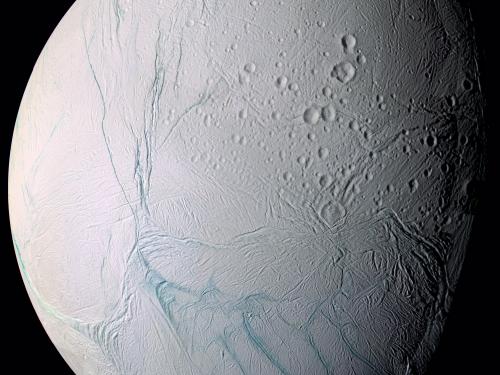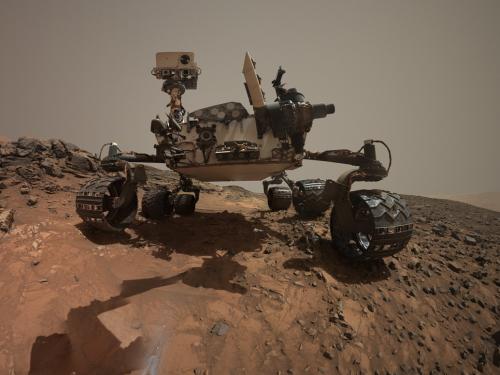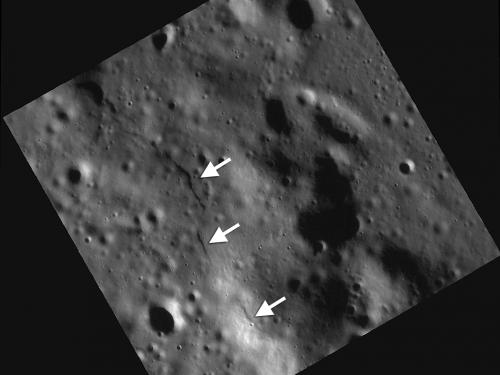

Stories of daring, stories of technological feats, stories of prevailing against the odds ... these are the stories we tell at the National Air and Space Museum. Dive in to the stories below to discover, learn, and be inspired.
Showing 61 - 70 of 111

December 06, 2017
This past August, CEPS scientists traveled to Iceland to study geologic features known as pit chains, which form in a similar way to pit chains on Saturn’s icy moon, Enceladus.

November 29, 2017
Sustainable energy has been at the heart of modern innovations large and small, from efficient light bulbs in living rooms to solar panels powering buildings. One of the newest breakthroughs in energy technology can often be found zipping around the streets in front of the Department of Energy (DOE) in Washington, DC—a car powered by hydrogen fuel cells.

November 14, 2017
Just like you conduct experiments in your science class, astronauts do experiments while in space. The microgravity of space allows astronauts to carry out experiments that would not be possible in the gravity of Earth. There are more than 300 experiments currently happening aboard the International Space Station (ISS).

September 27, 2017
If you’re going to Mars, which do you bring: water or a shovel? The question may sound a little tongue-in-cheek, but it actually goes right to the heart of a critical need for future human exploration of Mars – accessible water. Learn how the MARSIS instrument is helping answer this question.

August 08, 2017
In this Van Dyke Brown photographic print from the from the Smithsonian’s National Air and Space Museum art collection, Jim Leisy (1950 – 2014) shows us one way to safely view a solar eclipse. On first glance we see an unidentified person wandering aimlessly in a dreamy atmosphere with a box over their head. As the title Solar Eclipse suggests, the cosmic observer is actually catching a glimpse of the fleeting phenomenon with a pinhole projector.

July 28, 2017
You’ve probably heard of the National Aeronautics and Space Administration (NASA), but have you heard of the Italian Space Agency or the European Space Agency? NASA works with these groups, among others, to explore the frontiers of space together. It wasn’t always this way; Russia and the United States both devoted countless resources to beating each other to space in the 1960s. But today, through shared missions and space stations, we work cooperatively to explore the final frontier.

June 02, 2017
When John Grant was only 16, the Viking landers were sent to Mars. Today, Grant helps lead the operation groups controlling two Mars rovers, Opportunity and Curiosity, as a geologist at the National Air and Space Museum’s Center for Earth and Planetary Studies. Recent data collected by Curiosity and published in Science describes an ancient lake environment located at Gale Crater—an environment Grant, a coauthor of the article, believes holds further clues to whether there was ever life on the Red Planet.

February 22, 2017
What do NASCAR and space travel have in common? Beyond reaching speeds that would give the rest of us whiplash, the two also share a very special fiber. Nomex® fiber is used in both spacesuits and racing suits. The fiber, made by DuPont™, is extremely flame-resistant and has many applications.

November 25, 2016
Black Friday is upon us. If you are looking for ways to avoid being mauled and crushed at your local Mall, but you want to somehow observe the day in spirit, why not explore what it takes to discover a really massive and dense object, a black hole.

November 16, 2016
At their core, planetary missions are about exploration, pure and simple. It’s hard to beat the excitement of discovering a new feature on the surface of a planet that’s being imaged by spacecraft for the first time. I had this experience many times during the MESSENGER mission.